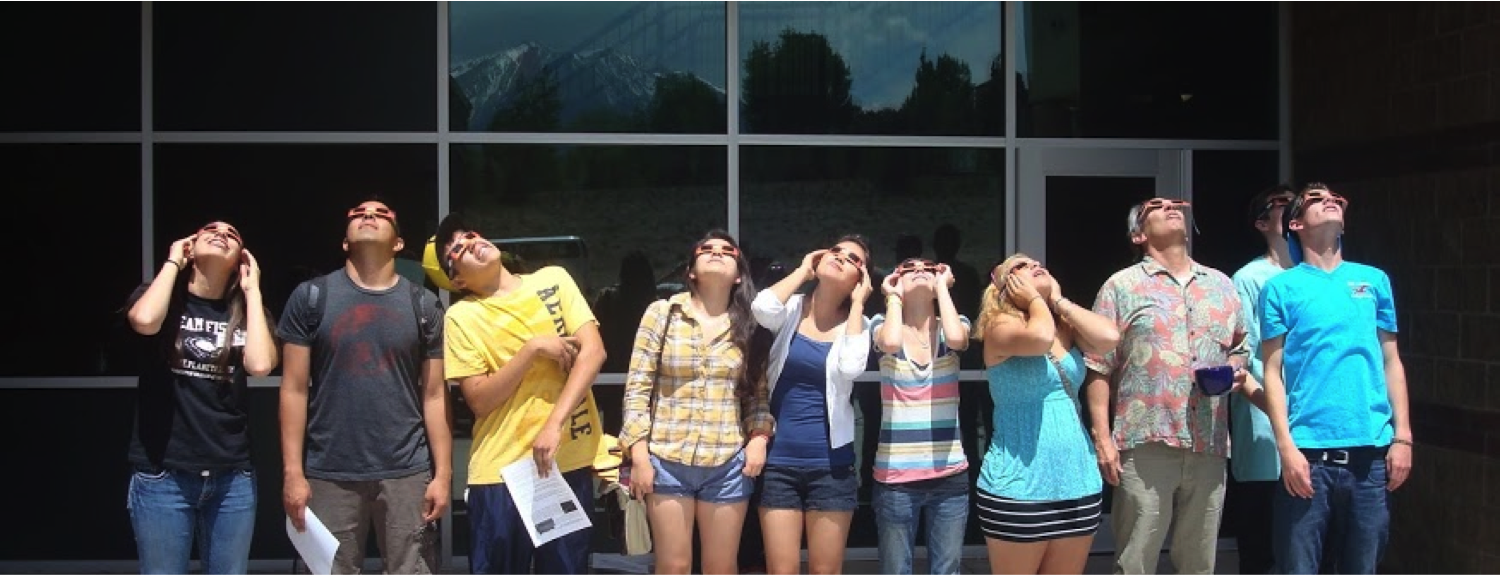cara battersby
Assistant Professor
University of Connecticut

TEACHING
Student learning is significantly improved when using any form of
interactive engagement (Hake, R. 1996).
While a community-wide shift to interactive teaching techniques will
take time, many (astro)physics instructors, including myself, have
decided to adopt simple interactive teaching strategies into our
classrooms right away. These include "clicker" questions (Duncan,
D. 2006), Think-Pair-Share, and Lecture Tutorials (e.g. Prather
et al. 2004).It is my teaching philosophy to: 1) engage students interactively in order to maximize their learning gains, 2) empower them to answer their own questions – to help them learn how to think so that they can make logical, research-based decisions throughout their lives, and 3) cultivate their inherent interest in science.
Courses
Astrophysics Foundations Course for UndergraduatesDeveloped and taught PHYS 2701: Foundations of Modern Astrophysics
University of Connecticut, Fall 2017
Graduate Level Seminar
Co-instructor, ASTR 6000: Graduate Seminar on the Interstellar Medium
University of Colorado at Boulder, Fall 2011
Instructor of Record for an Undergraduate Non-major Astronomy Course
Co-instructor, ASTR 1120: Stars & Galaxies
University of Colorado at Boulder, Summer 2011
Teaching Assistant for ASTR 101: The Solar System
Boston University, Spring 2008
Teaching Assitant for ASTR 117: Cosmic Evolution
Boston University, Fall 2007
Teaching Assistant for ASTR335: Modern Astrophysics
University of Massachusetts Amherst, Fall 2005
Teacher Training
In my >30 workshop hours of teacher training (the Graduate
Teacher Program at CU-Boulder), I learned the reasoning behind and best
techniques for using interactive teaching techniques. As the instructor
of record for an undergraduate non-major astronomy course (ASTR1120), I
had a chance to try my hand at implementing these techniques (find me
here: FCQ,
rated 5.7/6, putting me in the top 15% of all instructors in the
College of Arts & Sciences at University of Colorado Boulder).
Roughly half of each class period was spent in a traditional lecture,
intermixed with thought-provoking "clicker" questions and time for the
students to Think-Pair-Share: Think - decide what answer to commit to,
Pair - explain their reasoning to a classmate and vice-versa, and Share
their final answer and reasoning with the class. A fraction of time
(maybe 10-20%) was also devoted to group activities, such as Lecture
Tutorias.